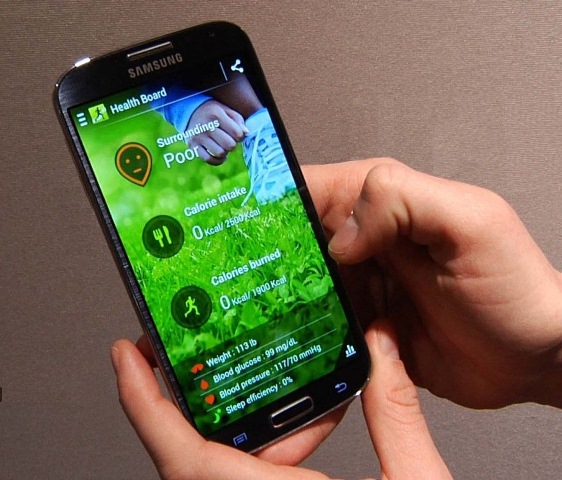We recently surveyed three industry leaders to obtain their views on how they believed consumer electronics would change in the coming year. Interestingly, we found that their was really no concensus on how things might change in the near future, but that what these individuals brought to the discussion was a unique perspective based on their latest experience. The results make for interesting reading, and provide some ideas about the direction individal designers may choose to take.
Electronic Products : What’s the key technology that will change consumer electronics in the coming year,and why?

Alissa M.Fitzgerald, Founder and Managing Member, A.M. Fitzgerald & Associates, LLC: Actually, I don’t think any significant change will happen in the next year. The touchscreen interface and integration of sensors (iPhone, iPad) was the last disruptive innovation for consumer electronics, and so for the next year, we’ll just see continuation of incremental work. My criteria for what constitutes “change” is probably stricter than others’.
Karen Lightman, Director, MEMS Industry Group: MEMS sensor fusion—the intelligent integration of multiple sensors with MEMS for the purpose of improving application or system performance—will increasingly help OEMs/ODMs to make smarter decisions in designing consumer electronics (CE).

Mehul Udani, General Manager for Connectivity Solutions, Murata Electronics Americas : The most important technology destined to impact the consumer space is WiFi and Bluetooth, both found in smart phones and now a part of an even more revolutionary communications technology – smart nodes. Smart nodes are all the devices that we are used to utilizing but now need to be connected wirelessly.

For example, we see thermostats, home appliances such as washer, dryer, air-conditioners, cooking range and many others with the ability to communicate wirelessly. As you can see there are no boundaries where wireless cannot be considered.
In home automation segment, there are now options ofnew wireless control applications such as door unlock, temperature control, garage door operation, electric door lock, etc., from a smart phone or the Internet. We can take this one step further; what if home-alarm goes offwhile you are not at home? The alarm company will call 911 and will alsocall you. However, what about those people, who do not have an alarm company?
With many of the new embedded WiFi applications and with the level software that Murata and others are creating, we can now have a home-alarm device send you a direct text message that it is sounding. Or haveyour hot water heater contact you when a leak/failure occurs. We will also seewireless lighting products expand in big way. Just like smartphones haverevolutionized the way we “communicate”, smart nodes willrevolutionize the way we “control all the things around us” andgiving the true meaning of “Internet of Things”.
ElectronicProducts : What particular challengesdo engineers face in delivering new features? How might power constraintchallenges be overcome?
Udani : One of the challenges we see for smart node design engineers is that they don't have the same level of engineering resources that a typical phone company has to implement wireless. The fundamental technology is the same of what goes in smart phone versus what goes in these appliances but their use cases are very different. Smart-phone companies have an RF team and Software team and separate applications team. In contrast, typically, there are no RF engineers or embedded software programs in companies that make home-alarm products. We recognized these challenges and started designing products that integrated these three key attributes.
Lightman : The number one challenge to delivering new features through MEMS is the need for standardization, because there is still a lack thereof. However, we are making strides on this front. MEMS Industry Group (MIG) will release a comprehensive document of standardized sensor performance definitions to the general public, at no charge. The act of defining the parameters of a type of MEMS device—such as a gyro or an accelerometer—makes it much easier for designers to compare MEMS products from disparate manufacturers, thereby speeding time to market. This document is historic because MIG members representing the major MEMS device manufacturers and software integrators, a number of which are competitors, cooperatively authored it.
Fitzgerald : The main challenges are cost and power.Power constraints can be overcome with clever software to manage and meter power to the different sensors and systems in the product.
ElectronicProducts : What will the main source of innovation be? (For example, do you think it will be a market-leading company? A new generation of engineers from Asia, the Americas, or Europe? New demandsfrom consumers? Changes in government regulations?)
Fitzgerald : It depends on the kind of product. Innovation in smart phones and tablets is the domain of large companies, due to the complexity of the product and its supply chain. Innovation in other consumer electronics (including plug-in phone modules) will come from smaller, younger companies around the world who will be experimenting with an inexpensive supply of microprocessors, memory, sensors, etc., and who can share and learn information on the Internet.
Lightman : Historically, MEMS innovation in consumer electronics has come from tech push, but as the industry and technology are maturing,that’s changing. The primary source for MEMS innovation now is market pull—as consumers are now expecting (and are willing to pay for) mobile phones and tablets that create a much more enhanced user experience, thanks to the “MEMS inside.”

A great example of market pull is the new Galaxy Smartphone S, which is set up for biofeedback by design. To quote from a recent Gizmondo review, “ SHealth is an app that will track your steps, stairs climbed, and the ambient temperature and humidity, plus track your food intake and estimate calories consumed/burned. You can even track sleep with an optional accessory….” With healthcare costs rising, people want to take more control of their own health. What better way to do this than via a smart device that is always with you? I love that Samsung took the first step, and instead of waiting for someone to design an app to fit with the phone, they are designing the phone with the health applications already embedded.
Udani: We are now introducing products are relatively simple to design-in and are pre-certifiedwhich eliminates RF specific resources. We included all the software built-into the module so our customers do not have to worry about embedded protocol stack, profiles, etc. On top of that, we included an embedded server into the module. So, customers can pick up our module and they will only need to make minimal investment in embedded development. This type of turn-key product will enable a plethora of many new applications and devices that will become the innovation engine for a new class of consumer wireless electronics.
Advertisement
Learn more about Electronic Products Magazine





